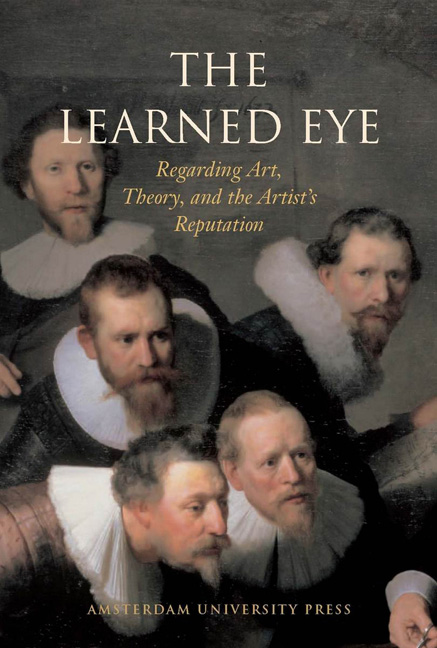Colour Symbolism in Seventeenth-Century Dutch Painting
Published online by Cambridge University Press: 25 January 2021
Summary
In Ernst van de Wetering's wonderfully insightful book Rembrandt. The Painter at Work, we learn much about the artist's craft, not only about the materials with which he worked, but also about how he used them. We are told, for example, about the size and character of the painter's palette, and how it changed over time. We learn about the types of paints that artists placed on their palettes, and the reasons for their arrangements. Ernst explains about the nature of the support, and about the build-up of paint from the ground layers to the uppermost glazes. He discusses the importance of the monochrome under-painting for establishing the composition and for enhancing colour tonalities in the finished image. We are treated with fascinating discussions about Rembrandt's medium and brushwork, and the effects of time on the appearance of his images.
In his section on ‘Rembrandt's Intentions with Colour and Tone’, Ernst emphasizes that colour and tone are important for the spatial and compositional structure of a painting. Here he writes about how impastos allow light to ‘sparkle’ as it bounces from the paint's irregular surface, and, as well, about the pictorial harmony, or houding that results when relationships between various colours and between light and dark areas are carefully considered. He based these observations on countless hours of careful looking at paintings and technical examination reports, and on information culled from sixteenth- and seventeenth-century treatises on painting. But one topic that Ernst does not discuss when considering colour in Rembrandt's work is whether the artist ever considered the symbolic language of colour when conceiving his works, a topic that was of great interest to seventeenth-century theorists.
Interest in colour symbolism, which has traditions going back to antiquity, is still very much alive today, not only in red roses, white wedding dresses and black funeral attire, but also in more whimsical adornments such as mood rings and mood bracelets. Although we do not talk very much about colour symbolism in our studies of seventeenth-century Dutch art, the topic is of great concern in the study of many other periods of art history, not least among them fifteenth-and sixteenth-century Netherlandish paintings.
- Type
- Chapter
- Information
- The Learned EyeRegarding Art, Theory, and the Artist’s Reputation, pp. 99 - 110Publisher: Amsterdam University PressPrint publication year: 2005



